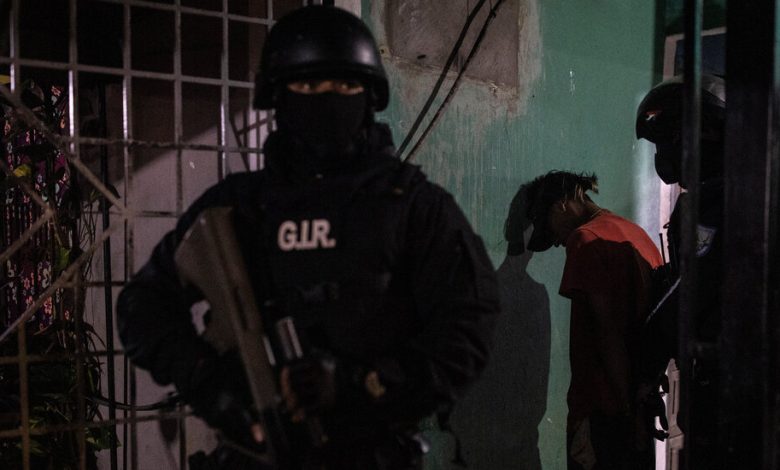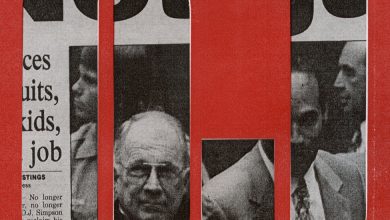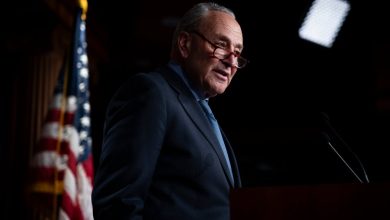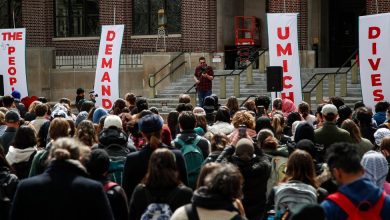How the Narcotrafficking Industry Seized Power in Ecuador

When Europe’s busiest port recently announced the discovery of nearly nine tons of cocaine hidden in a shipment of bananas — its biggest-ever seizure of illegal narcotics — it included a detail that was no longer surprising. The shipment had come not from Colombia or Peru, Latin America’s largest cocaine producers, but from Ecuador, the small nation sandwiched between them.
Ecuador has struggled for years with drug trafficking because of its geographic location, fairly porous borders and major Pacific Ocean ports.
But in recent years, the situation has gotten much worse.
An overcrowded, corrupt and poorly financed penal system has become a breeding ground for prison gangs that have formed alliances with powerful drug cartels from abroad.
These ingredients that have helped make Ecuador an increasingly major player in the global drug trade have also unleashed an extraordinary wave of violence, transforming life for millions of everyday Ecuadoreans. Now it has drawn an international spotlight with the assassination last week of a presidential candidate just as the country prepares to vote on Sunday.
The candidate, Fernando Villavicencio, had repeatedly warned of links between drug gangs and government officials and politicians, and days before his assassination had spoken publicly about threats from a local criminal group.
His killing has left the country of 18 million reeling, helping make security a top concern among voters and leaving many Ecuadoreans wondering how their country, once a relatively peaceful oasis in a turbulent region, became a battleground and a place where a politician could be killed in broad daylight.

Supporters of the presidential candidate Fernando Villavicencio gathered last week after his assassination in Quito, the capital.Credit…Johanna Alarcon for The New York Times
Ana Vera, 44, a housekeeper in Quito, the capital, said the escalating violence had turned her into a bit of a recluse. “You go from home to your work and nothing more,” she said.
The roots of Ecuador’s travails lie largely in a shifting drug market and a government ill-equipped to handle it.
Ecuador’s homicide rate actually dropped under a former president, Rafael Correa, who governed from 2007 to 2017, through increased policing and a commodities boom that helped lift millions out of poverty.
But Mr. Correa, in 2009, also decided not to extend the lease for a U.S. military base in the port city of Manta used to fly planes to interdict drugs, and he cut ties with the U.S. State Department’s international narcotics agency.
The expulsion of U.S. forces hampered Ecuador’s ability to control its northern border with Colombia and eased the distribution of drugs in the country, according to a former Ecuadorean counterterrorism and anti-narcotics officer who asked not to be identified because he was returning to government service.
Mr. Correa’s successor, Lenín Moreno, prioritized paying off the country’s foreign debt and imposed austerity measures and budget cuts that further weakened the nation’s security apparatus.
He eliminated government agencies, including the justice ministry, and slashed spending on policing and prisons, sectors seen as “expendable” in a country that had long been peaceful, according to Glaeldys González, who researches Ecuador for the International Crisis Group.
In neighboring Colombia, the government signed a landmark peace agreement in 2016 with the country’s largest rebel group, the Revolutionary Armed Forces of Colombia, or FARC, which controlled much of the drug trade.
When the group disarmed, it cracked open the narcotrafficking business and led to new groups and routes, Ms. González said.
Some factions in FARC that refused to sign the accord moved their business to Ecuador, where they could continue operating away from the watchful eye of the Colombian government.
Ecuador had long been a transit hub for drugs coming from Colombia and Peru, but after 2016, local groups became involved in manufacturing and distribution, joining forces with Mexican and even Albanian cartels.
Within three years, Ecuador had became the top exporter of cocaine to Europe, according to a European drug monitoring agency, where the use of the drug has been rising.
Just last week, Netherlands announced the record seizure in Rotterdam, Europe’s largest port, of cocaine from Ecuador worth $660 million.
Domestic and foreign groups took advantage of a country whose ability to take on narcotrafficking had been undermined by the cuts to the police and military, a weak justice system and a penal system largely run by gangs.
An economy that uses dollars as the local currency and weak financial controls also made it easier to launder drug money.
“There was no institutional framework like there was in countries that have had to face this problem,” Ms. González said, “because it had never been a problem in Ecuador.”
Complicating matters, many police, military and prison officials themselves have been tied to the drug trade. Numerous high-level officials, including police commanders, have had their visas revoked by the United States because of ties to drug trafficking.
Today, at least three major international crime groups operate in Ecuador: Mexico’s two most powerful cartels, Sinaloa and Jalisco Nueva Generación; as well as a European group that the police call the Albanian mafia.
“We are no longer facing common delinquents but the largest drug cartels in the entire world,” President Guillermo Lasso of Ecuador said last year.
As influential as such groups have been in Ecuador’s descent into drug-fueled killings and kidnappings, its prison have also played a central role, serving as gang headquarters and recruitment centers.
Ecuador’s prison population surged to 40,000 inmates in 2021 from 11,000 in 2009, driven by a policy adopted under Mr. Correa that keeps the accused in jail until their trial, as well as harsher punishment for low-level drug dealers.
“You fill these prisons with people that need to survive there,” said Max Paredes, who focuses on drugs for an Ecuadorean research group. “Many were rejected by their families because of their drug use, and the only way of surviving was becoming part of the gangs.”
A special intelligence unit created in 2015 to gather information about drug trafficking in prisons gave privileges to certain inmates in exchange for information. The practice led to more cocaine seizures outside the prisons, but also increased the power of gangs, said Jorge Núñez, an anthropologist who has studied the Ecuadorean prison system for 20 years.
Ecuador’s drug business grew more volatile in 2020, when the leader of the most powerful domestic cartel, Los Choneros, was slain, fragmenting the organization and setting off an intense fight for control of the market, Ms. González said.
Los Choneros was the group that Mr. Villavicencio said had threatened him.
At the same time, Ecuador’s government has largely failed to take even rudimentary steps to address the security crisis, said Carla Álvarez, who researches security at the Institute for Advanced National Studies in Quito.
Many police officers do not carry guns or wear bulletproof vests, and many prisons lack metal detectors.
Some radar installations along the coastline used to detect ships and planes carrying drugs are damaged, and the ports do not have surveillance equipment that can be used to detect hidden cocaine shipments, Ms. Álvarez said.
Mr. Lasso has been criticized for a plodding and inefficient response to the security crisis, and expectations are high for the country’s next leader to find ways to stem the avalanche of violence.
But the country’s interior minister, in a WhatsApp voice message to The Times, said the wave of violence was a response to increased government pressure on crime groups, including more drug seizures and moving many gang leaders to maximum-security prisons.
“So, of course, this generates these levels of violence,” said the minister, Juan Zapata. “This shows the strength of the state’s response.”
The candidates running on Sunday have all emphasized their security credentials, especially after Mr. Villavicencio’s assassination. But there is also widespread pessimism about the government’s ability to regain control from violent groups that hold sway in many parts of the country.
Six men arrested in connection with Mr. Villavicencio’s killing are Colombian nationals, adding to a sense that outside forces are contributing to Ecuador’s slide into seemingly unstoppable violence.
Days after Mr. Villavicencio was shot dead, a local leader of a national political party in the coastal province of Esmeraldas was assassinated, the third politician killed in the past month.
“People no longer want to go out for a walk, or eat in a restaurant, because they kill us,” said Marcos Zúñiga, a 53-year-old cabdriver in Guayaquil, the country’s largest city. “We have never experienced anything like this.”
The assassination of Mr. Villavicencio, who made fighting organized crime a pillar of his bid to lead the country, “was like sending a message,” Ms. González said.
“That if you talk about these issues or touch on these issues so openly at a public level,’’ she added, “this is what can happen.”
Thalíe Ponce contributed reporting from Guayaquil, Ecuador.




